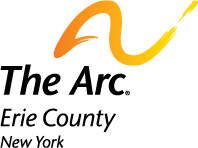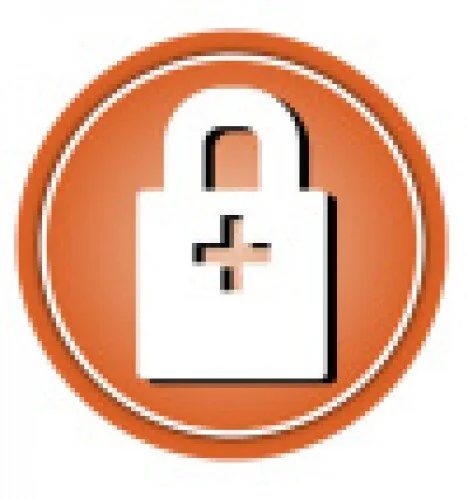Accreditations
CQL Accredidation
The Arc Erie County has been awarded the esteemed four-year Person-Centered Excellence Accreditation by The Council on Quality & Leadership. This award affirms our commitment to providing person-centered supports that lead to increased quality of life.
For more than 40 years, The Council of Quality and Leadership (CQL) has been a leader in raising the bar for human service organizations and systems to continuously define, measure, and improve the quality of life of all people. Organizations that are awarded accreditation by CQL meet a stringent set of criteria and demonstrate an ongoing commitment to Person-centered excellence.
When The Arc Erie County partnered with CQL to pursue accreditation, we undertook a rigorous process to review and improve services and supports. The Arc Erie County's efforts were focused on empowering the people who receive support from their organization to make choices in how they live their lives, where they work, where they live, and how they create a community.
The Arc Erie County has been awarded CQL accreditation as a result of demonstrating proficiency in the following areas:
Basic Assurances® (ensuring fundamental safeguards related to health, safety, and human security)
Personal Outcome Measures® (supporting and empowering people to achieve their goals and dreams)
Person-centered Excellence (demonstrating organizational commitment to continued enhancement of systems directly related to person-centered services)
Basic Assurances
CQL’s Basic Assurances® contain 10 factors and 46 indicators. These Basic Assurances® are a balance between concerns for individual health, safety and security and the necessity of social constructs such as respect, natural supports and social networks to ensure sustainable outcomes for people. Each indicator is evaluated on two dimensions; system and practice.
System typically refers to the policies and procedures an organization has in place. These are supported through staff training and other approaches. The systems must demonstrate sustainability over time, yet be flexible enough to be individually applied.
Practice refers to what is happening in people’s lives as a result of these systems. Organizational practice demonstrates how an organization’s supports are put into action for each person.
10 Basic Assurances® Factors
Rights Protection and Promotion
Dignity and Respect
Natural Support Networks
Protection from Abuse, Neglect, Mistreatment and Exploitation
Best Possible Health
Safe Environments
Staff Resources and Supports
Positive Services and Supports
Continuity and Personal Security
Basic Assurances® System
Personal Outcome Measures
Personal Outcome Measures
How is The Arc Erie County Using Personal Outcome Measures®?
The insight gained during a Personal Outcome Measures® (POMs®) interview is used in the development of person-centered plans. After each POMs® interview, the interviewer creates a “What Matters to Me Plan.” Based on the information gathered, the top three to five outcomes that were identified by the person are put into a plan that is presented to the person and his/her support team. The team then works together to develop supports that assist the person to achieve those Personal Outcomes.
The collective data gathered from all POMs® interviews is used at an aggregate level to guide the organization’s strategic plan. When interviews are completed, interviewers then go through a process of determining, for each of the 21 outcomes, if the outcome and the supports necessary to achieve that outcome, are present or not. By entering the results of that process into a database, the organization is able to detect trends in the outcome and support areas of the POMs®. Heritage Centers then uses that information to identify the outcome areas that the organization is strong in, along with the areas in which we would like to improve. Organizational strategies are then created to reach the desired goals.
The foundation of the Personal Outcome Measures® is also being used to cultivate a continuous change in our organization’s culture, where person-centered thinking is at the forefront. Person-centered thinking is when everyday thoughts and actions put each person’s individual needs and desire first and foremost. This is accomplished by incorporating POMs® questions into everyday interactions to learn about what people want. Once goals and desires are known, the organization responds by determining the necessary steps to make them happen.
PERSON-CENTERED EXCELLENCE
Achieving Person-Centered Excellence accreditation demonstrates our commitment to CQL’s principles and values of providing person-centered and self-directed supports. There are eight Key Factors that use success indicators to promote personal quality of life. As part of the accreditation process, organizations, in conjunction with stakeholders, are required to identify three Key Factors to enhance over the accreditation term. For each of the three factors, short and long-term goals are developed at the time of accreditation. Goal progress is then monitored by CQL over a four-year period. The Arc Erie County, in conjunction with CQL and stakeholders, has identified supports and services, community connections, and workforce as the key factors to enhance.
Person-Centered Excellence Key Factors:
Person-Centered Assessment and Discovery – The purpose of assessment and discovery is to broaden the understanding of the person and guide planning. People feel welcome, heard, and have the authority to plan and pursue their own vision. Assessments of needs are fair and accurate. The assessment and discovery process identifies each person’s definition of quality of life.
Person-centered Planning – Focuses on the person as the key decision-maker in his or her own life. The planning process is based on what is most important to the person. Peoples’ plans are person-centered, plans identify and integrate natural supports and paid services. Informal community resources are utilized. Planning is responsive to changing priorities, opportunities, and needs.
Supports and Services – People are encouraged to follow their dreams, desires, and goals. Supports are expanded to meet new needs and choices. People have the authority to direct supports. Supports options are accessible, flexible, and available in emergency situations.
Community Connections – Networks are created between people and their communities. Organization members are supported to connect to other people and resources in the community and perform leadership roles. Community membership facilitates personal opportunities, resources, and relationships. People are provided information and training related to community involvement. Peer mentoring is also available.
Workforce – Organization recruits, hires, and trains a diverse and competent paid and volunteer workforce. The workforce is stable and qualified. Feedback and recognition is provided to Direct Support Professionals who support people to achieve goals. Personnel have flexibility and autonomy to support people. Support for organizational change is provided.
Governance – Organization engages in responsible governance and management practices. Practices are ethical, accountable, and open. The mission, vision, and values address person-centered supports. People and families play meaningful roles in the organization.
Quality & Accountability – Organization exercises trust and has a responsibility to people receiving supports, their families, the community, funders, and employees. Quality management systems are integrated and the quality of supports are measured. Personal information remains confidential. Participants, families, and advocates evaluate the organization and the supports provided.
Emerging Practices in Individual Budgets – The organization’s commitment to expands people’s abilities to have more control over how funding for their supports are allocated. Individual budgets support the person to live his /her life by choosing what services and supports he/she receives.





